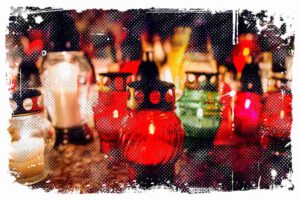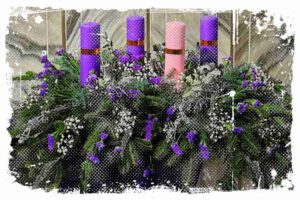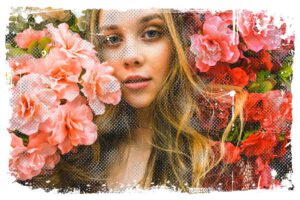Let me say that traditional folk costumes are a fascinating aspect of Poland’s village culture. They used to signify one’s social group and express their status, while also highlighting the importance of various celebrations, both personal and community-related. In some cases, these costumes even served as symbols of national affiliation.

I think it’s worth mentioning that Polish folk costumes experienced their greatest development in the second half of the 19th century and the beginning of the 20th century. This was partly due to the enfranchisement of peasants and the shift from a self-sufficient economy to a commodity-based one, as well as the rapid growth of industry.
The Transformation of Folk Culture Costumes
In the years between World War I and World War II, and then after the Second World War, the role of folk costumes changed significantly. They were no longer everyday attire but became more of a representative costume. The appearance of these outfits depended on numerous factors, such as the region, its history, and prevailing socio-economic relationships. Borowing elements from noble, bourgeois, or military uniforms was quite common, and European Baroque and Renaissance fashions also influenced their design and decorations.
I can tell you that today, folk costumes are mainly worn during significant church or state ceremonies. The most valuable designs have been preserved in museum collections. Sometimes, modern clothing incorporates elements of these traditional outfits, like Podhale trousers or shoulder aprons from the Opoczno region.
↳ PRO TIP: Do you like traveling? Then before you buy any ticket or book an attraction, check if it's available in this worldwide Viator Database. You may save a lot of money and time. No need to thank me :)
The Legacy of Traditional Polish Folk Costumes
It is worth to say that after the fall of Cepelia, an organization that united and supported many folk artists, the production of these beautiful garments declined, and newly created outfits in most regions now only serve as costumes.
Exploring the Diverse Culture Clothing of Different Polish Regions
In Poland, there is an incredible variety of folk costumes. At their peak, there were nearly fifty main types, each with about ten variations. Let’s dive into some of these unique regional clothing styles.
Here is a table that summarizes the different regional costumes in Poland:
| Types Depending on Voivodeship | Costumes Specific to Region or City |
|---|---|
| Łęczyca, Sieradz, and Wieluń lands | Łęczyca, Opoczno, Piotrkowski (Wolborski), Sieradz, Wieluń |
| Lesser Poland | Czestochowa, Kielce-Włoszczowa, Cracow, Lachów Sądeckie, Opoczno, Radom, Rzeszów, Sandomierz, Świętokrzyski, Wilamowski, Zagłębie |
| Lublin | Biłgoraj-Tarnogród, Krzczonowski, Łuków, Radzyń, Włodawa |
| Masovian | Kurpie, Łowicz, Wilanów, Sanniki, Kolbielski |
| Pomeranian | Dobrzyń, Kociewie, Slovinian, Kashubian, Warmian, Pyrzyce |
| Silesian | Jeleniogórski, Kaczawsko-Nadbobrzański, Karkonosze, Kłodzko, Wałbrzych, Wrocław, Głogów, Nysa region, Cieszyn, Pszczyna, Racibórz, Rozbarski (Górz), Jaceków Jabłonków, Silesian highlanders, Silesian Lachs, Koźle |
This table includes only the costume names and the regions they are associated with. More information, including pictures and descriptions of each costume, can be provided by this video:
The Iconic Krakow Costume
I believe one of the most recognizable costumes in Poland is the Krakow costume. It is divided into two types – Western and Eastern Krakowiaks, with the former considered the national costume.

Girls in Krakow costumes wear a wreath of artificial flowers on their heads, adorned with colorful ribbons. The corsets they wear are intricately embroidered, with so many details that they’re practically works of art! These corsets are further embellished with ribbons, beads, and sequins. The green skrts worn by the Krakowiaczki feature a distinctive floral pattern, and a white, slightly transparent apron is worn on top.
For men, the Krakow cap is a crucial element of their outfit. Decorated with a peacock feather and colorful ribbons, it complements the caftan – a long vest – quite well. Tassels, or fringes, are sewn onto the caftan. Gentlemen also wear breeches in a delicate red color or with small stripes.
Seasonal and Evolving Styles in Folk Costumes
You might be wondering if these costumes look the same all year round. Well, there are lighter, summer versions and warmer ones with more layers. So, folk costumes can vary depending on the season.
Additionally, over the years, their style has evolved, resulting in different versions of clothing even within one region. I think it’s fascinating to see how these traditional costumes have adapted to changing times and preferences while still maintaining their cultural significance.
You may also want to read this article: How Did Poland Change After World War II
The Distinctive Podhale Costume
I’m sure you’ve seen the highlander’s festive outfit before. You know, the black felt hat with seashells sewn onto a red ribbon? That’s part of the men’s ensemble, which also includes a white shirt, a beautifully embroidered bedspread called a cucha, striped breeches with a unique embroidered pattern at the waist, and kierpce – leather shoes tied to the legs with straps.

In the early 20th century, women’s Podhale costume incorporated urban fashion trends of the time (closely linked to the history of Zakopane), leading to significant changes. A corset is worn over the decorated shirt and tied with a red ribbon, with a bow and hanging straps adding extra flair with a floral motif.
Let me say that the Podhale costume has inspired many modern fashion designers. Ever heard of „kierpce„? You should check them out! It’s an excellent example of how old fashion can be transformed into something new and fresh.
Please read this article to learn more about Podhale: A Guide to the Tatra Museum in Zakopane – A Must Visit
The Kuyavian Costume
Although complete sets of the Kuyavian costume haven’t survived to this day, we know what individual elements looked like. Men wore white linen shirts adorned with a red handkerchief, a caftan made of cloth, and a navy blue waistcoat called „katana„.

Decorated with vertical rows of buttons and a red belt tied around the hips, the „katana” was quite eye-catching. Women’s attire included woolen corsets laced with ribbons, a navy blue caftan „kabat” that could be further embellished with a cape, and three-layered skirts adorned with Kuyavian embroidery. Additionally, women wore embroidered white or colored aprons, boots, and red beads. Men donned black hats or „rogatywka” caps, sometimes decorated with a feather.
The Colorful Świętokrzyskie Costumes
Have you ever heard of a motherwort? It’s a men’s hat that’s part of the Świętokrzyskie costume. The ensemble includes a shirt often decorated with red thread and a long brown coat called a „sukman„. Gentlemen wear tapered trousers, frequently dyed navy blue.

Girls also wear embroidered shirts, but instead of coats, they don armwraps. Arm and waist aprons are dyed with small stripes, and a shirt and corset fastened with buttons or ties are worn underneath. Red is a significant color in this outfit – you’ll find it on both the tasseled scarf worn on the head and the leather shoes.
I can tell that you might be wondering if people of all ages dress the same in these traditional outfits. Do they resemble the clothing worn by caretakers, parents, or grandparents? As you get to know these folk costumes more closely, you’ll notice that the elements can differ depending on the wearer’s age.
Conclusion
So, as you can see, Polish folk costumes were worn by a wide variety of ethnographic groups. Their golden age was during the second half of the 19th century and the early 20th century when peasants’ wealth increased. In the interwar period, folk costumes transitioned from everyday attire to special occasion garments.
To Learn more about the peasants, please check this article: The Truth About Slaves in Poland – Uncovering the Reality of Serfdom
The costume’s appearance depended on the region, climate, economy, and socio-economic factors. Inspiration often came from the clothing of nobility, bourgeoisie, and military uniforms. European fashion from the Baroque and Renaissance periods also played a role. The intricacy of each costume’s decoration was influenced by the wealth of the ethnographic group and the individual owner.
References
- https://strojeludowe.net/
- https://repozytorium.amu.edu.pl/bitstream/10593/14665/1/Brzezi%C5%84ska%2C%20Str%C3%B3j%20ludowy%20%E2%80%93%20od%20biografii%20przedmiotu%20do%20to%C5%BCsamo%C5%9Bci%20podmiotu.pdf



